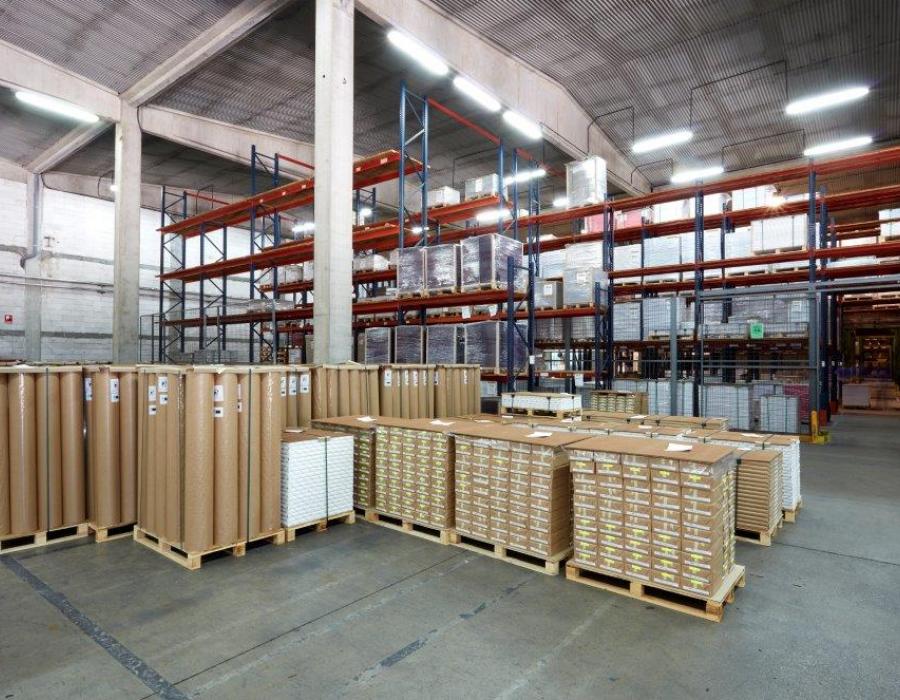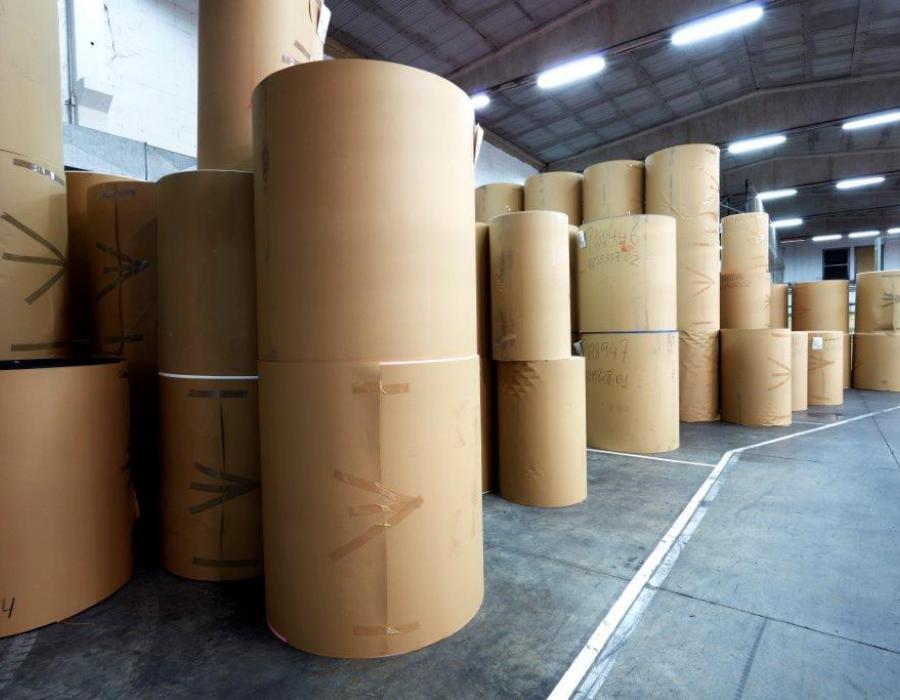There are many manufacturers and distributors in the paper industry, so we may encounter differences in the way that each one of them presents prices and sizes. This difference also occurs depending on the market for which the material is intended.
If the paper is for the graphic sector, it is normally sold by the kilogram or by the ton, since large amounts are required for production, such as for the inside pages of books or magazines (although many distributors also sell packets of 500 sheets). On the other hand, sheets or reels in square metres are normally used for binding (as in the case of Guarro Casas), with smaller amounts used for covers. For example, packets of 100 sheets or reels of 100 metres may be sold.
Normally, the manufacturer or distributor provides all the selling data: price per ream, per packet, per ton, etc. Nevertheless, we do not always have all these details and may want to calculate it. Below we recap on the most common calculations and conversions used in the purchase of paper.
Selling formats
The first thing we need to know is that there are different standard ways of counting paper on the market. One thing to be taken into account is the use of the word “ream” to designate sets of 500 sheets. Closely linked to this concept are the signatures, a term broadly used by professionals who have been in the trade for longer to refer to sheets. This new designation is due to the fact that in order to make a book, several pages are actually printed on the same sheet, which is folded to yield a pile of 6-8 properly-paginated sheets.
However, besides the ream, there are other formats for the sale of paper. They may be packets or pallets, in the second case also in two formats: pallets divided into packets on the inside and pallets with loose sheets. Sheet capacity in this latter format will depend on each manufacturer’ indications, although normally they are defined by weight and by height.

M
Standard sizes
Moreover, there are also regular dimensions established for the selling of paper. Standard sheets are normally 70 × 100 cm, although it is also very common to find 72 × 102 cm. Despite this, reels need to be bigger for manufacturing them to be productive and they are subsequently cut to the necessary sizes. As a rule, these rolls are 1.4 m wide. Since the standard sheet is 70 cm, normally multiples of this figure are manufactured on reels (140 cm, 210 cm, 280 cm…).
Based on these more common values, we shall now proceed to perform a series of conversions to calculate the prices or sizes we may need when a manufacturer or distributor gives us data from their sales catalogue.
M
Square metres on a reel and on a sheet
One of the details we are most interested in is the area of paper we have on a reel, in other words the square metres we are purchasing on this “roll”. By way of example, if we have a reel that is 140 cm wide and 1000 cm long and want to know how many square metres it contains we must multiply both lengths.
Area of the reel = height × width = 1000 cm × 140 cm = 100 m × 1.4 m = 140 m2
Therefore, this reel will hold 140 square metres of paper. When we cut this reel into the standard sheet sizes we get sheets of 70 × 100 cm. We use the following calculation to ascertain the area:
Area of the sheet = 100 cm × 70 cm = 1 m × 0.7 m = 0.7 m2

Weight of a reel and price in kilograms
If we want to know how much a reel will weigh, for example for the purpose of transportation, in the case of a 1000-cm (100-m) long and 1.4-m wide reel weighing 115 g, the operation would be as follows:
Weight of the reel = area of sheet x g/m2 = 140 m2 × 115 g/m2 = 16,100 g = 16.1 kg
Once we have the weight, it is easy to calculate the cost of these kilograms since we need only multiply both factors:
Price of the reel in kg = weight of the reel × €/kg = 16.1 kg x €3/kg = €48.3
Price per square metre
One problem that may arise in prices is that the manufacturer could give us a price quotation in Euros per square metre but only tell us that they sell it in packets of sheets. To find out the cost of this paper in m2 we need to multiply the number of sheets per packet by the square metres of one sheet and multiply this result again by the per-square-metre price. For example, in the case of a packet of one hundred 170 × 100 cm sheets and a price of 3 Euros per square metre:
Area of the packet = no. of sheets × area of the sheet = 100 sheets × 0.7 m2 = 70 m2
Price of m2 = area of the packet × €/m2 = 70 m2 × €3 = €210

Sheets per reel
If instead of purchasing per sheet we want to purchase by the reel and need to know how many sheets we will get from the reel we need to proceed as follows. If we have 100 linear metres on a reel (1000 cm) and a width of 1.4 metres (140 cm) and the standard sheet is 70 × 100 cm:
Area of the sheet = height × width = 100 cm × 70 cm = 1 m × 0.7 m = 0.7 m2
Area of the reel = height × width = 1000 cm × 140 cm = 100 m × 1.4 m = 140 m2
Sheets per reel = area of the reel ¸ area of the sheet = 140 m2 ¸ 0.7 m2 = 200 sheets
We may also want to buy non-standard sizes, which is what Guarro Casas offers its clients, perhaps because the paper is needed for a project with unusual dimensions. For example, to obtain 70 × 80 cm sheets, the calculation would be as follows:
Area of the sheet = 70 cm × 80 cm = 0.7 m × 0.8 m = 0.56 m2
Area of the reel = 1000 cm × 140 cm = 100 m × 1.4 m = 140 m2
Sheets per reel = 140 m2 ¸ 0.56 m2 = 250 sheets
In this case, it is very important to know the direction of the fibre in the publishing or packaging project in order to obtain the desired width or height dimensions.
Weight of a sheet and of a ream (of 170 g)
If the information we want to obtain is the weight of the paper being purchased in a ream, a problem of comparisons arises, since normally we talk about paper grammage in square metres, whereas this unit of measure is not used for selling. Once you know that a standard sheet has 0.7 m² square metres (as we have already calculated), we multiply it by the grammage of the square metre to obtain the weight of one sheet. Moreover, if we multiply it by the number of sheets on a ream (500) we obtain the total weight of this unit.
Weight of the sheet = area of the sheet × g/m2 = 0.7 m2 × 170 g/m2 = 119 g
Weight of the ream = weight of the sheet × sheets per ream = 119 g × 500 sheets = 59,500 g = 59.5 kg
Price of one packet of 100 sheets based on the price per ton
If the manufacturer only provides us with the weight of a ton, it may be useful for us to know what the cost of a 100-sheet packet is if we only need a smaller amount. We will make the calculation in the imaginary case that one ton costs €1,300/t and the packet of sheets is 72 × 102 cm with a grammage of 170 g/m2. First of all we need to know the area of the sheet in order to determine the grams in one packet and thus be able to calculate the price. This is more clearly illustrated below:
Area of the sheet = 72 cm × 102 cm = 0.72 m × 1.02 m = 0.7344 m2
Weight of one sheet = m2 of the sheet × grammage in m2 = 0.7344 m2 × 170 g/m2 = 124.85 g
Weight of the packet = weight of the sheet × no. of sheets = 124.85 g × 100 = 12,485 g = 12.485 kg
Price per kg = price per ton ¸ 1,000 = €1,300/t ¸ 1,000 = €/1.3 kg
Price of the packet = weight of the packet × price per kg = 12.485 kg × €1.3/kg = €16.23/packet of 100 sheets
Price of a packet of 100 sheets in Euros per square metre
However, instead of having the price per ton, we may have the price per square metre, so we would want to know the price of the same 100 packet. By way of example, we calculate it in the second standard sheet size (72 × 102 cm), with an approximate price of 2.5 Euros per square metre.
Area of each folio = 72 cm × 102 cm = 0.72 m × 1.02 m = 0.7344 m2
Total area in the packet = area of the sheet × total sheets = 0.7344 m2 × 100 = 73.44 m2
Price of the packet = total area of the packet × price m2 = 73.44 m2 × €2.5/m2 = €183.6/packet
Wastage in other materials
There are special materials, such as textiles or PVC, which are sometimes not manufactured in standard widths or multiples of 70 cm, but rather, for example, in sizes of 105 or 100 cm. In these cases, part of the material will be unusable: wastage. If we want to know how much material we are going to waste or what it will cost us, we can do so on the basis of the area of this surplus. Considering that we are supplied with 105 × 100 cm sheets and we need sizes of 85 × 100 cm in a textile at 4.5 Euros per m2:
Wastage area = height × width of wastage = 20 cm × 100 cm = 0.2 m × 1 m = 0.2 m2 wastage
Price of wastage (per m2) = area of wastage × €/m2 = 0.2 m2 × €4.5/m2 = €0.90/m2 wastage
